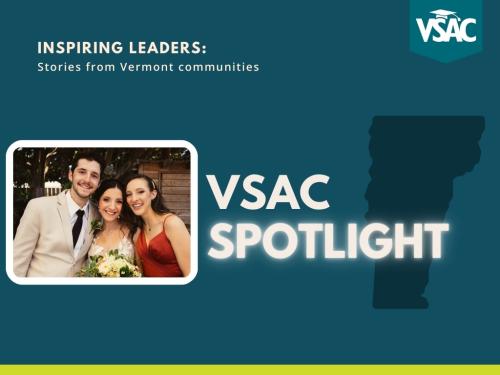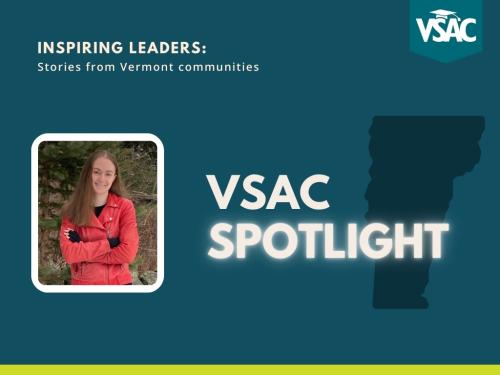Burlington's Aden Haji teaches New Arrivals to drive thanks to VSAC funding

Earning your driver’s license is an American rite of passage. For American-born teens, it's a milestone, but for new arrivals driving is critical to adjusting to their new life. Aden Haji is helping new arrivals in Vermont adjust to their new home by empowering them behind the wheel of a car.
“Getting your license is a necessity. It opens doors and opportunities,” says Aden Haji, founder of Haji Driving Academy. Located in Burlington, Haji specializes in helping new arrivals earn their driver's license to bring them one step closer to merging into American culture.
“I always ask my clients why they want to learn to drive. Sometimes it’s to further their employment, sometimes to get their children to school and activities. And some say they’re tired of asking others for rides.” Whatever the case, Haji says, “Wanting that sense of freedom and mobility is very understandable.”
A new home with new responsibilities
That feeling is one Haji remembers from his own parents, who arrived here from Kenya back in 2003 as part of the first wave of Somali/Bantu refugees to emigrate to Vermont. Haji, the oldest of six children, was six years old at the time. Even at that age, he recalls, “It was a challenging transition, learning to navigate all of the cultural and educational aspects.” And for adults, he points out, the responsibilities of working and caregiving are layered on top of that cultural transition—which usually includes learning how to drive.
After teaching several friends and family members to drive and being praised for his teaching style, Haji says “A light bulb went off in my head. I kept hearing about people wanting to learn how to drive, and I realized I could put my life experience into that work. I felt like that was my calling.”
According to the company website, Haji Driving Academy emphasizes working with diverse populations whose cultural and linguistic needs are often overlooked in driver’s education. One obstacle is the language barrier, which Haji understands firsthand. When he can’t communicate with his clients in his additional languages—including Somali—his experience as a one-time new arrival himself often sets clients at ease. “I ask the people I’m driving with to share the driving terms they know in their language, and we get to learn from each other,” he says.
Sometimes, he says, clients have a learning curve if they come from a congested city environment, where roads are crowded with cars, pedestrians and animals. There's especially an adjustment when their native country drives on the left side of the road. “When they come to Vermont, many of them have to ‘rewire’ themselves, which can be anxiety-inducing for some. It takes some time to adjust.”
Calming nerves to make learning easier
Some of his clients also have deeper-rooted anxieties, which driving can bring to the surface. “For them, I really try to understand where that fear is coming from. Many people have trauma in their background. I try to help them uncover where that’s coming from and help them come to closure. I enjoy helping people overcome those burdens from their past.”
In fact, Haji’s educational background is in this area, having majored in anthropology at the University of Vermont. “I didn’t know exactly what I was going to do with my degree at the time. But being able to teach people from various backgrounds, that’s definitely within the realm of anthropology,” he says, noting that he’s taught people from Thailand, Vietnam, Togo, Congo, Afghanistan, Brazil, Jamaica and the Caribbean.
“I really enjoy the time I spend with people in the car. I feel like I get to travel without leaving the car,” Haji says. “In addition to teaching them, I learn a lot as well."
In fact, continuous learning has been a big part of Haji’s journey. When he started researching what it would take to open a driving academy, he was surprised to learn how much training was required. He ended up accomplishing his dream with the help of another education organization—VSAC.
Short-term training for long-term dreams
“There are courses I had to take in order to become certified,” Haji explains. Thanks to partial financial support from VSAC’s Advancement Grant—which supports adult students by funding short-term training opportunities that lead to job or career growth—Haji was able to complete those courses faster than he might have otherwise, had he financed the tuition entirely on his own.
“Receiving the VSAC Advancement Grant was so helpful for me, and it’s also been a huge step forward in making drivers’ ed more accessible to people who need that support,” says Haji, He adds that several of his students have also received funding for his driving course under the same grant program.
Haji’s academy offers several course options, he says, from full-service “0-to-60” instruction, to a five-hour package designed for those who already have driving experience, and just need to prepare for the Vermont road test. And if they need a vehicle to take their test, they can rent Haji’s Jetta for a few hours.
While Haji himself is the only instructor at the moment, he intends to hire others down the road. He also hopes to add additional vehicles, equipped with the additional passenger-side foot-brake and extra rear-view mirror for the instructor. As the business grows, Haji is also looking for ways to integrate more eco-friendly practices into the driving school. Participating in community workshops on sustainability and fuel efficiency, even instilling sustainable driving habits in his students will help him reach his goal.




